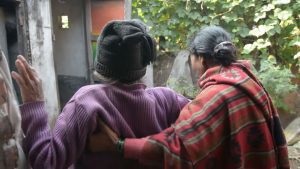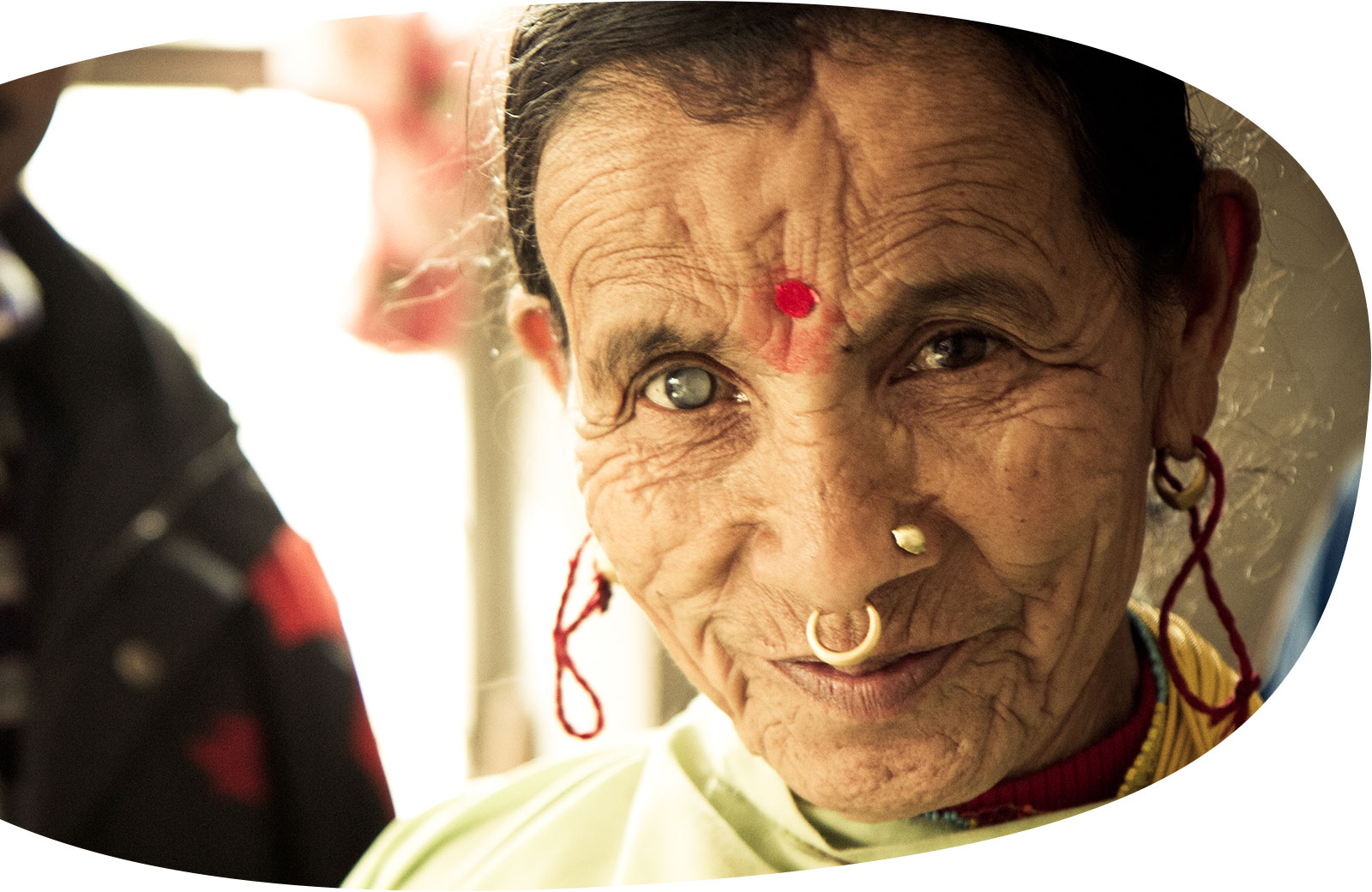
Nepal
Nepal has a population of 29.1 million people, of which an estimated 6.8 million have vision loss, 100,000 of whom are blind (2020).
We work through Seva Nepal, an in-country office that provides technical, program development, and managerial support to an ever-expanding network of facilities.
The challenges of Nepal’s cultural diversity and mountainous geography, have resulted in it being one of the most complex countries to provide eye care to its rural residents.
However, the prevalence of blindness, primarily cataract, in Nepal has dropped by half in the last two decades – from 0.82% to 0.30%. This success is due in part to our pioneering work with Aravind Eye Care System, our partner in India, in developing and teaching an efficient, effective and inexpensive cataract surgery model. As a result, thousands of impoverished cataract patients regain their sight every year without any need for foreign aid.
A Network of Eye Care Facilities
Over the past four decades, our work has shifted to meet the unique demands of providing eye care to remote communities nestled in the Himalayas, as well as the towns and cities bordering India. Through a network of over 80 eye care facilities (including tertiary hospitals, secondary hospitals and Community Eye Centres (CECs)) in over thirty of Nepal’s 77 Districts, stretching from far western to far eastern regions, we are reaching the unreached with critical eye care services.
Community Eye Centres utilise an innovative public-NGO funding model, whereby the municipalities provide the physical space and salaries, and we provide the ophthalmic equipment, an initial supply of glasses and medicine, and training and supervision of care, including referrals to eye hospitals.
Eye Care Training
Seva-supported Nepali eye institutions not only provide excellent care for adults and children, but also focus on training programs that produce ophthalmic professionals for many regions of the country, including sub-specialist and general ophthalmologists, optometrists, orthoptists, ophthalmic assistants, and ophthalmic nurses. Training also includes community ophthalmology program planning and management, as well as chronic disease management, such as diabetic retinopathy and glaucoma, and support for clinical and community research projects led by the hospital staff.
In remote areas of Nepal where financial sustainability is more difficult due to a lack of paying patients who can subsidize services for those unable to afford care, we also support outreach programs and direct services like glasses and surgeries for the community.
In addition to the national program, we were instrumental in establishing the Lumbini Eye Institute in 1985. This specialty care and training facility is Seva Nepal’s largest and longest running eye care facility. Lumbini has become one of the most successful models of high-volume quality eye care in the world. Its fee structure, developed by Seva and Aravind, enabled the program to become economically self-sufficient within a year through service-generated income, so a small proportion of paying patients covered the costs of those who are too poor to pay.
A $50 donation will change a life!
News
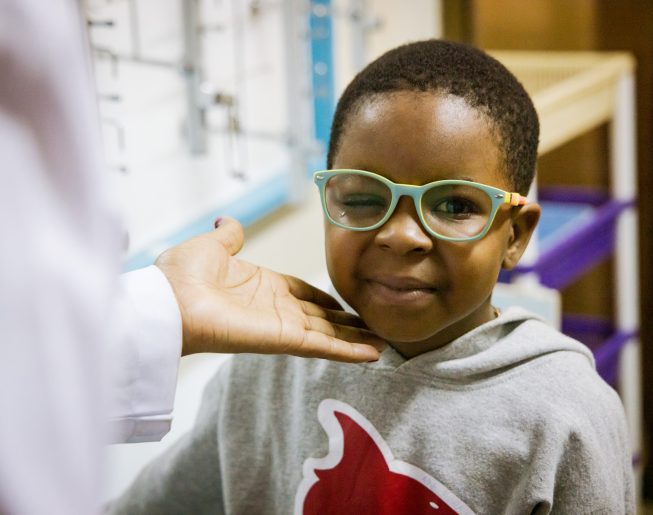
Nasra Sees The World Anew
At just seven years old, Nasra is discovering the world with fresh eyes— quite literally. When she first speaks, she is shy, unsure even of
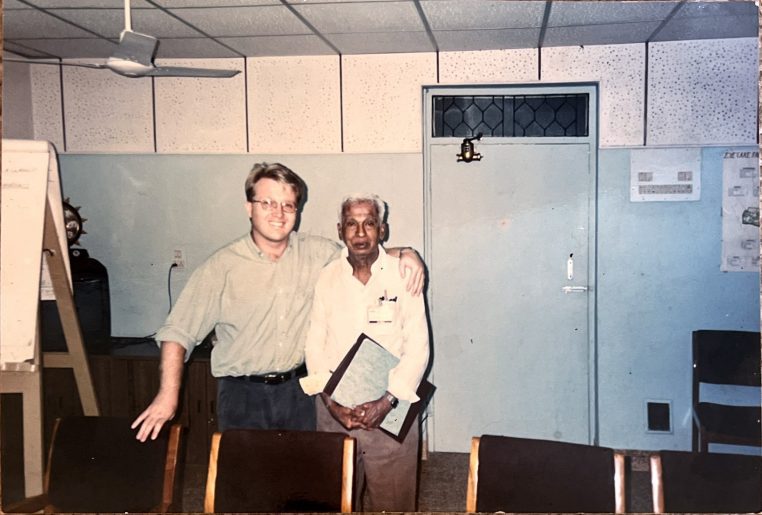
The Ripple Effect of Vision: A Journey from Madurai to Seva Canada
Nearly 30 years ago, while working for a UK corporation supporting volunteer programs in India, a young professional found himself in Madurai, Tamil Nadu. It
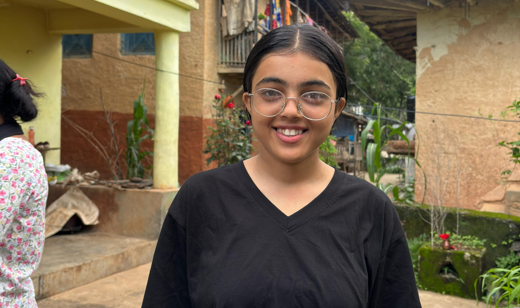
From Blurred Vision to a Bright Future: Prebheksya’s Story
Thirteen-year-old Prebheksya sat in her classroom in rural Nepal, struggling to read the blackboard, her textbooks, and even see the faces of her friends. She
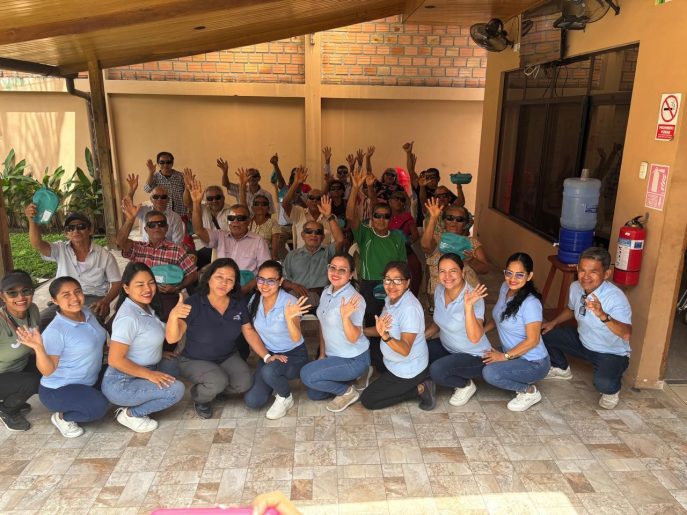
Outreach Support in Peru Through Partnership with Clínica Oftalmologíca Divino Niño Jesus
Thanks to your generous support, Seva Canada has expanded its work to South America for the first time through a new partnership with Clínica Oftalmologíca
